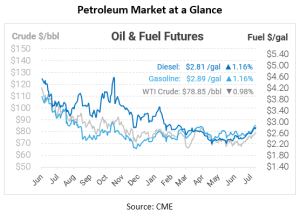
What is it – Fracking
Have you ever heard of fracking as it pertains to the oil industry? More than likely you have heard the term hydraulic fracturing, which is the long form of fracking. Now let’s cover what you need to know about fracking, so you better understand where your oil and gas come from.
What is Fracking?
Fracking, a shortened term for hydraulic fracturing, is a cutting-edge drilling technique that has revolutionized the extraction of oil and natural gas. This method is especially useful for tapping into hydrocarbon reserves trapped in tight rock formations, such as shale, that are located deep underground.
Before the fracking process begins, a suitable site must be identified through geological surveys. Once a site is selected, it is prepared by clearing the land, setting up access roads, and assembling the required drilling equipment.
Although the technology has existed for decades, it was not applied commercially until the 1990s. It was further honed and researched, reaching widespread adoption during the 2012-2015 US Shale Revolution, which saw US crude production explode to new heights.
How does fracking work?
Initially, a well is drilled vertically to reach the targeted rock formation, often shale. Fracking is often associated with shale, since shale rock is known for having many tiny deposits of oil and gas distributed amidst the cracks. The well may then take a horizontal path for several thousand feet to maximize exposure to the desired geology. The casing is perforated in the target rock layer. A high-pressure mixture of water, sand, and chemicals is pumped into the well, causing the rock to crack and create small fractures.
Sand or other solid materials, known as proppants, lodge into the fractures, keeping them open even after pressure is released. Oil or natural gas flows through the fractures to the well, and then to the surface. For a complete overview of the fracking process, check out this video.
There are environmental concerns associated with fracking, including the potential for water contamination, excessive water usage, induced seismic activity, and air pollution. The economic impact of fracking is significant, however, as it has created numerous jobs and contributed to energy independence in some regions.
What regions of the US have the most fracking?
The United States has established itself as a global leader in fracking, significantly contributing to its position as one of the world’s largest producers of oil and natural gas. Within the United States, there are several regions that stand out due to the high level of activity.
The Permian Basin, which stretches across Western Texas and Southeastern New Mexico, is the crown jewel of American fracking. It’s the most prolific region, producing a substantial proportion of the nation’s oil. The basin has a rich geology with multiple stacked layers of oil-bearing rocks, which makes it economically favorable for operators. Advances in technology, like horizontal drilling, have enabled the extraction of oil and gas from tight rock formations, which was not previously economically feasible. The Permian Basin not only supports local economies but has a significant impact on the U.S. energy landscape as a whole.
The Bakken Formation in North Dakota is another noteworthy region where fracking has revolutionized oil production. This area, which also extends into Montana and parts of Canada, was relatively unknown in terms of oil reserves until the 2000s. Fracking has allowed access to oil trapped in shale formations, leading to a boom in production. Similar to the Permian Basin, the Bakken Formation has been instrumental in driving economic growth in the region, although it has also faced challenges such as infrastructure limitations and environmental concerns.

Why is fracking considered controversial?
Hydraulic fracturing is considered controversial for several reasons, many of which are related to environmental and public health concerns. One of the major concerns about fracking is the potential for contamination of groundwater with chemicals used in the fracking fluid. If the wells are not properly constructed or if there are unintended leakages, chemicals can migrate into groundwater, potentially affecting drinking water sources. Fracking requires large volumes of water, which can strain local water supplies. In regions where water is scarce, this can cause competition between fracking operations and other uses for water, such as agriculture and consumption.
The extraction process can release air pollutants, including volatile organic compounds and methane. Methane, in particular, is a potent greenhouse gas, contributing to global warming and climate change. Flaring, the burning of natural gas that cannot be processed or sold, is also a common practice and can contribute to air pollution. There are concerns regarding the exposure of local populations to the chemicals used in fracking. The long-term health effects of exposure to these chemicals are not well understood, and people living near fracking sites have expressed concerns about possible impacts on health, including respiratory problems and cancer.
Some argue that the expansion of fracking represents a continued reliance on fossil fuels, which can detract from the development and adoption of renewable energy sources. Because of these concerns, there are diverse opinions on fracking, with some seeing it as a vital component of energy strategy and others viewing it as a dangerous and unsustainable practice. Policymakers, environmental groups, and industry representatives continue to debate the best approaches to balance the economic benefits with environmental and health impacts.

This article is part of Daily Market News & Insights
Tagged:
MARKET CONDITION REPORT - DISCLAIMER
The information contained herein is derived from sources believed to be reliable; however, this information is not guaranteed as to its accuracy or completeness. Furthermore, no responsibility is assumed for use of this material and no express or implied warranties or guarantees are made. This material and any view or comment expressed herein are provided for informational purposes only and should not be construed in any way as an inducement or recommendation to buy or sell products, commodity futures or options contracts.





